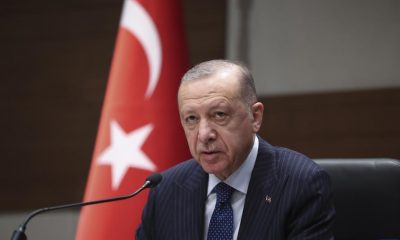LATEST FINANCIAL NEWS
10 challenges that forced SAA CEO to throw in the towel
[ad_1]
Vuyani Jarana was appointed SAA CEO in November 2017, the first permanent CEO at the national carrier since 2015. At the time he was tasked to turnaround the airline which was in financial distress.
However, on Wednesday May 29, 2019 he tendered his resignation to SAA board chair JB Magwaza. The CEO cited uncertainty about funding and bureaucratic processes delaying decision making needed to turnaround the airline, as reasons for his resignation.
Fin24 considers the challenges Jarana had to face during his tenure, here are 10 key quotes from his resignation letter:
1. Uncertainty about funding
In his letter Jarana explains to effect a long term turnaround strategy that would see SAA break-even by 2021, funding of R21.7bn is needed. SAA essentially needed the shareholder- which is government – to provide funding needed to execute the corporate plan. But things were not so simple as there had been uncertainty about funding.
“From 2018 to date we have had no less than three incidents in which the company was almost unable to pay salaries due to a lack of funding.”
2. No government buy in
Jarana stresses that even though SAA got a R5bn cash injection from government in 2018/2019, the majority of it was used to pay creditors up until March 2018.
“We have not been able to obtain any further funding commitment from government making it difficult to focus on the execution of the strategy. I spend most of my time dealing with liquidity and solvency issues. Lack of commitment to fund SAA, is systematically undermining the implementation of the strategy making it increasingly difficult to succeed.”
3. Delayed decision making
Jarana explains that SAA needs the approval of National Treasury and the Department of Public Enterprises to implement key decisions. This is not a problem, however it takes away the agility needed for a company like SAA which is an “ICU case”. Jarana shared examples of how decision making had taken too long in the areas of executive appointments and getting approvals for remedial plans for loss making routes.
“One of the areas of concern is speed in decision making, it is impossible to succeed in the turnaround with the current level of bureaucracy we have to go through to implement strategy.”
4. Blurred lines of accountability
Having to work between the executive, the board and the minister has also created confusion about the work within Jarana’s scope.
“Lines of accountability are becoming increasingly blurred about what operational decisions are in my domain, which are in the board’s domain and which are in the minister’s domain.”
5. Lack of trust
In addition to having a lack of clarity on operational decision making between the executive, the board and the minister, the lack of trust between these parties has exacerbated the situation, Jarana highlights.
“Trust levels are very low impacting ways of working. Implementing a turnaround strategy for a company in crisis as SAA, clarity of command structure, alignment of purpose and high levels of trust are critical elements of success.”
6. Depleting funding
Jarana describes an example of how SAA approached Deutsche Bank to help refinance its debt, in 2018. However government embarked on a process which resulted in the foreign borrowing limits approval being revoked. The airline had to cancel the agreement with Deutsche Bank. SAA then raised R3.5bn in emergency funding from local banks to carry the airline until March 2019.
“The R3.5bn facility will be depleted in June 2019.”
7. No budget allocations to SAA
Jarana explains that much of SAA’s ability to secure funding from lenders relies on the airline being backed by thegovernment. Attempts by SAA to get a letter from government to present to lenders, have not been forthcoming.
“You would know that we negotiated a specific dispensation with lenders to continue funding SAA going forward, this was predicated on SAA being mentioned in the Minister of Finance budget speech, which did not happen.”
8. Rising debt levels
Jarana adds that instead of reducing debt, it has risen.
“We have always maintained the SAA debt levels are unsustainable however instead of reducing debt while aggressively implementing the LTTS (long term turnaround strategy), we have increased it thus attracting addition(al) interest charges which all undermine the plan.”
9. Long term turnaround strategy at risk
Jarana paints a picture of how the LTTS is being undermined by systematic processes.
“The strategy is being systematically undermined, and as the Group Chief Executive Officer, I can no longer be able to assure the board and the public that the LTTS is achievable. A lot has to change to enable the accelerated implementation of the LTTS, to date I am not convinced that we can make the required changes both in terms of process and how we coordinate ourselves as a team comprising of executives, a board and two shareholder ministers.”
10. Internally created problems
Jarana concludes that most of the challenges SAA is facing is internal.
“Sixty percent of the problems at SAA are internal (within the control of management, and staff, the board and the shareholder) whilst 40% are market challenges.”
The CEO adds that he believes a turnaround at the national carrier is possible, with commitment from all stakeholders. Jarana is willing to serve his three month notice period at the airline which ends on August 31, 2019.
[ad_2]
Source link









